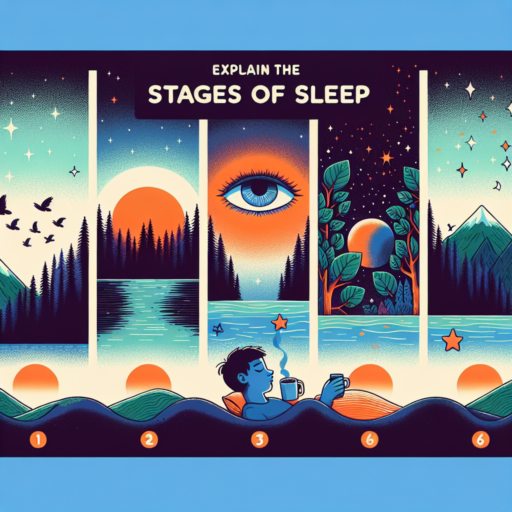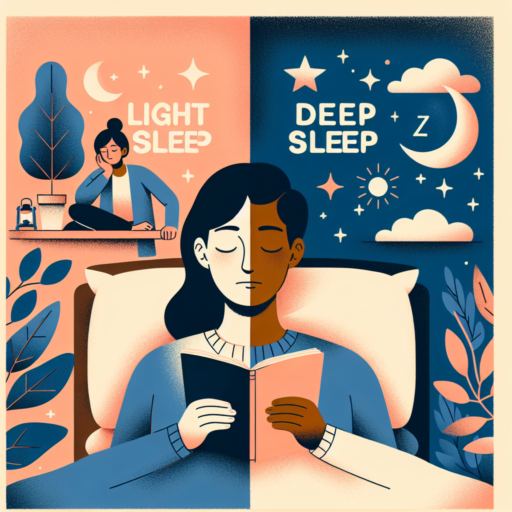What is a good percentage of REM sleep?
Understanding the good percentage of REM sleep is essential to evaluating sleep quality and overall health. Rapid Eye Movement (REM) sleep is a crucial phase of the sleep cycle, known for its importance in emotional regulation, memory consolidation, and brain development. Generally, a healthy adult should aim for a REM sleep constituting approximately 20% to 25% of their total sleep time. This translates to around 90 to 120 minutes of REM sleep for a standard 7 to 9 hours of nighttime rest.
Factors like age significantly influence the ideal percentage of REM sleep. For instance, newborns spend nearly 50% of their sleep time in REM, which decreases as one ages. Adults older than 60 may see a further reduction in REM sleep, which is part of the normal aging process. Nonetheless, consistently achieving a good percentage of REM sleep in adults is linked with numerous health benefits, including improved cognitive function, stress management, and mood regulation.
It’s also crucial to understand that the path to achieving optimal REM sleep isn’t straightforward. Lifestyle choices, psychological stress, and physical health conditions can all impact REM sleep duration and quality. Implementing good sleep hygiene practices—such as maintaining a consistent sleep schedule, creating a restful environment, and limiting exposure to screens before bedtime—can significantly help in enhancing the quality and proportion of REM sleep. Additionally, addressing underlying health issues with a healthcare provider can also contribute to improving REM sleep.
Which is better, REM or deep sleep?
When debating which stage of sleep is better, REM (Rapid Eye Movement) or deep sleep, it’s important to understand the unique benefits each one offers. REM sleep is most commonly associated with vivid dreaming, but its significance goes far beyond nightly narratives. It plays a crucial role in emotional regulation and memory consolidation, making it a vital component of cognitive health.
In contrast, deep sleep, also known as slow-wave sleep, is the time when the body repairs itself. This stage is paramount for physical recovery, including tissue growth and repair, as well as immune system strengthening. Deep sleep also aids in the detoxification of the brain, thanks to the glymphatic system that becomes more active during this stage, clearing out waste proteins that can lead to neurodegeneration.
Both REM and deep sleep stages are fundamental to overall well-being, each serving distinct yet equally critical functions. Deep sleep focuses on physical health and restoration, while REM sleep is more about the mind, affecting learning, memory, and emotional health. This duality between physical restoration and mental processing underlines the complexity of sleep and its comprehensive benefits to human health. An optimal sleep cycle comprises a balance of both REM and deep sleep phases, each complementing the other in maintaining holistic health and well-being.
No se han encontrado productos.
Is 40% REM sleep too much?
Understanding the nuances of REM (Rapid Eye Movement) sleep is crucial when considering its proportion in our nightly rest. Often dubbed as the phase of sleep associated with vivid dreams, REM sleep plays a key role in memory consolidation and emotional regulation. But when we talk about its ideal percentage of our sleep cycle, the conversation becomes nuanced.
Typically, adults spend about 20% to 25% of their sleep in the REM stage, which translates to about 90-120 minutes of a standard 8-hour sleep period. When the percentage creeps up to 40%, it’s worth scrutinizing the potential reasons and implications. Such an increased proportion might indicate various underlying factors, ranging from sleep patterns to possible health concerns.
Furthermore, it’s necessary to understand the context in which an individual achieves 40% REM sleep. Are there any disruptions in the other stages of sleep, particularly deep sleep? Deep sleep is critical for physical recovery and growth hormone release. An imbalance favoring excessive REM at the expense of deep sleep could potentially lead to a feeling of unrefreshed waking, despite a seemingly adequate duration of sleep.
What percent deep sleep is normal?
Understanding the percent of deep sleep that is considered normal is crucial for assessing one’s sleep quality. Generally, deep sleep, also referred to as slow-wave sleep, constitutes a significant portion of the sleep cycle, playing a key role in restorative functions such as muscle growth, tissue repair, and immune system reinforcement.
For adults, the normal range for deep sleep tends to hover around 13% to 23% of the entire night’s sleep. This translates to roughly 62 to 110 minutes for someone getting the recommended seven to nine hours of shut-eye per night. It’s important to note, however, that these percentages can fluctuate based on factors such as age, lifestyle, and overall health.
While the exact percentage can vary from person to person, falling significantly outside this range may indicate issues with sleep quality or health conditions. Children and especially infants require a much higher percentage of deep sleep, often up to 50% of their sleep time, to support rapid physical and mental development.




